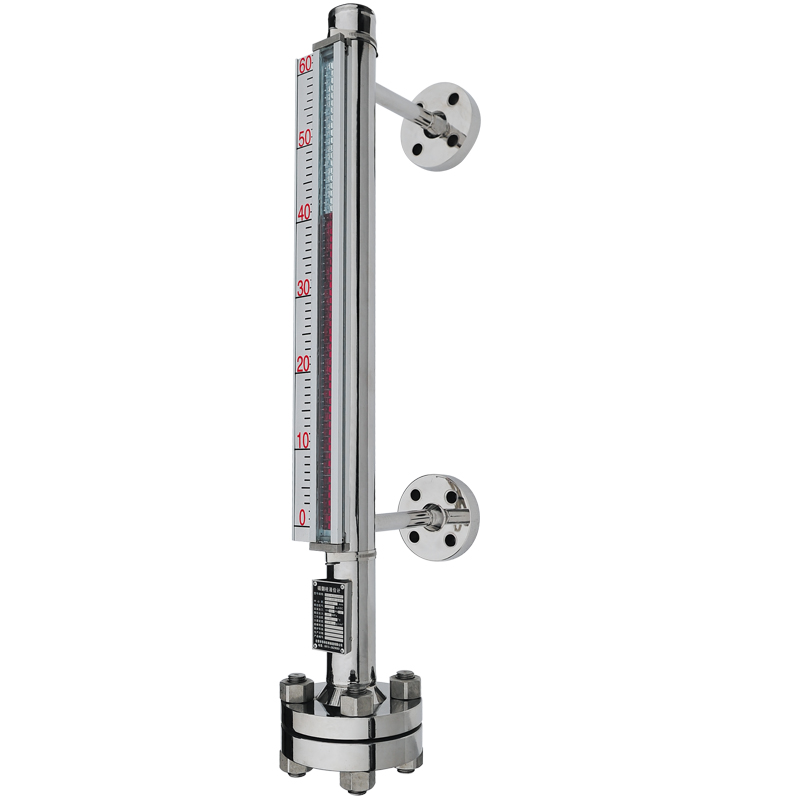The purpose of this white paper is to help operators choose a magnetic flap level gauge without searching a lot of technical data. In order to maintain efficiency, prevent costly process interruptions and keep you up to date with inventory levels, you can use magnetic flap level gauges to monitor material levels in storage containers. This white paper explains the types of level gauges available, the pros and cons of each type, and explains what information needs to be collected before working with level gauge suppliers. A magnetic flap level gauge is ideal for monitoring material inventory in your blood vessels and preventing downtime. The magnetic flap level gauge will continuously calculate the amount of material in the storage container, not just indicating whether the material is above or below a specific point like the material level gauge.The magnetic flap level gauge can output data to the console or panel, depending on the type and supplier of the level gauge. It can send information to HMI, PLC or PC by any means anytime, anywhere, or send information via SMS text or Internet.When using an advanced system with multiple level gauges, you can report data from multiple ships in your location, or from ships at multiple sites, so you can easily monitor the inventory status of the entire operation. However, without prior knowledge, it is difficult to choose the right magnetic flap level gauge for your application.A lot of information can be obtained about different types of level gauges and their technologies. The magnetic flap level gauge is one of the many devices you should know about. To determine which level gauge you need, it is important to understand some basic knowledge about how the different level gauge types work and their advantages and disadvantages.Before learning these basic knowledge, it is important to understand that the magnetic flap level gauge (usually installed on the top of the container) has a default dead zone or “blank distance”, which cannot be calculated between the top of the container and the top of the container. Area. The highest point that the level gauge can measure. When the material extends to the bottom of the blind zone, the level gauge will indicate that the container is full.The height of the dead zone varies with the type of level gauge, but it can vary from 4 to 36 inches. Most suppliers will preset the dead zone height in the level gauge controller according to the level gauge type, but if the application requires a lower full point, the dead zone height can be larger.
A magnetic flap level gauge is ideal for monitoring material inventory in your blood vessels and preventing downtime. The magnetic flap level gauge will continuously calculate the amount of material in the storage container, not just indicating whether the material is above or below a specific point like the material level gauge.The magnetic flap level gauge can output data to the console or panel, depending on the type and supplier of the level gauge. It can send information to HMI, PLC or PC by any means anytime, anywhere, or send information via SMS text or Internet.When using an advanced system with multiple level gauges, you can report data from multiple ships in your location, or from ships at multiple sites, so you can easily monitor the inventory status of the entire operation. However, without prior knowledge, it is difficult to choose the right magnetic flap level gauge for your application.A lot of information can be obtained about different types of level gauges and their technologies. The magnetic flap level gauge is one of the many devices you should know about. To determine which level gauge you need, it is important to understand some basic knowledge about how the different level gauge types work and their advantages and disadvantages.Before learning these basic knowledge, it is important to understand that the magnetic flap level gauge (usually installed on the top of the container) has a default dead zone or “blank distance”, which cannot be calculated between the top of the container and the top of the container. Area. The highest point that the level gauge can measure. When the material extends to the bottom of the blind zone, the level gauge will indicate that the container is full.The height of the dead zone varies with the type of level gauge, but it can vary from 4 to 36 inches. Most suppliers will preset the dead zone height in the level gauge controller according to the level gauge type, but if the application requires a lower full point, the dead zone height can be larger.
Post time: 21-09-21
